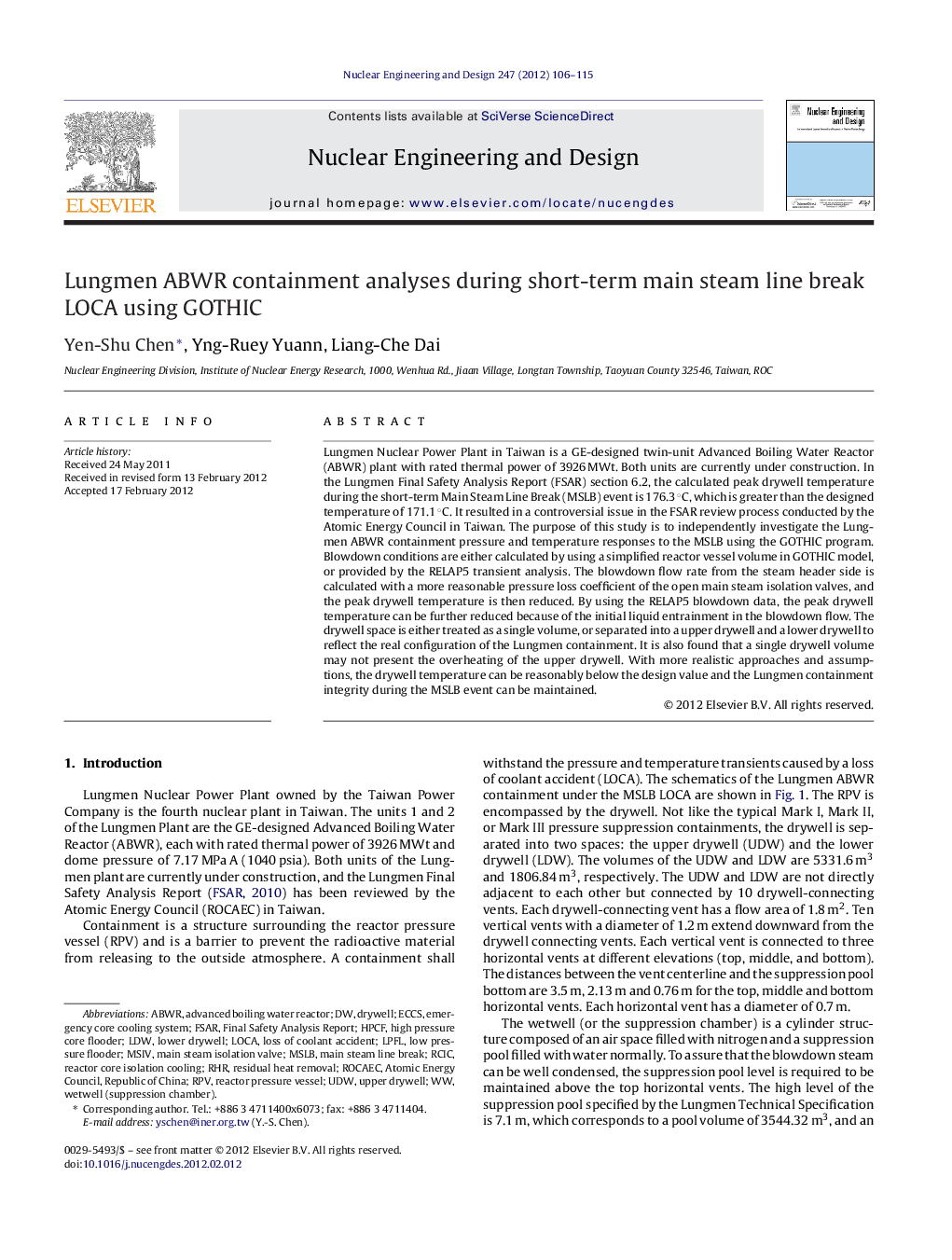| Article ID | Journal | Published Year | Pages | File Type |
|---|---|---|---|---|
| 297287 | Nuclear Engineering and Design | 2012 | 10 Pages |
Lungmen Nuclear Power Plant in Taiwan is a GE-designed twin-unit Advanced Boiling Water Reactor (ABWR) plant with rated thermal power of 3926 MWt. Both units are currently under construction. In the Lungmen Final Safety Analysis Report (FSAR) section 6.2, the calculated peak drywell temperature during the short-term Main Steam Line Break (MSLB) event is 176.3 °C, which is greater than the designed temperature of 171.1 °C. It resulted in a controversial issue in the FSAR review process conducted by the Atomic Energy Council in Taiwan. The purpose of this study is to independently investigate the Lungmen ABWR containment pressure and temperature responses to the MSLB using the GOTHIC program. Blowdown conditions are either calculated by using a simplified reactor vessel volume in GOTHIC model, or provided by the RELAP5 transient analysis. The blowdown flow rate from the steam header side is calculated with a more reasonable pressure loss coefficient of the open main steam isolation valves, and the peak drywell temperature is then reduced. By using the RELAP5 blowdown data, the peak drywell temperature can be further reduced because of the initial liquid entrainment in the blowdown flow. The drywell space is either treated as a single volume, or separated into a upper drywell and a lower drywell to reflect the real configuration of the Lungmen containment. It is also found that a single drywell volume may not present the overheating of the upper drywell. With more realistic approaches and assumptions, the drywell temperature can be reasonably below the design value and the Lungmen containment integrity during the MSLB event can be maintained.
► The Lungmen ABWR containment responses due to the main steam line break are analyzed. ► In the Lungmen FSAR, the peak drywell temperature is greater than the designed value. ► GOTHIC is used to calculate the containment responses in this study. ► With more realistic conditions, the drywell temperature can be reasonably suppressed.
